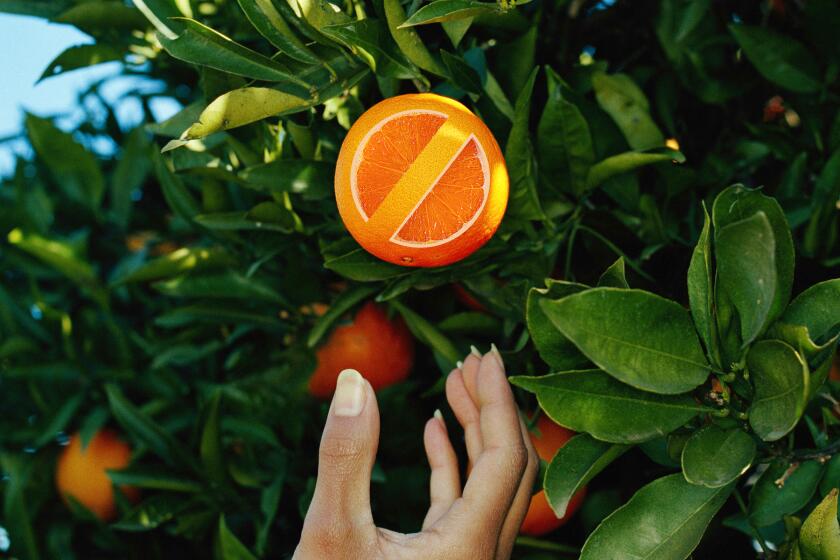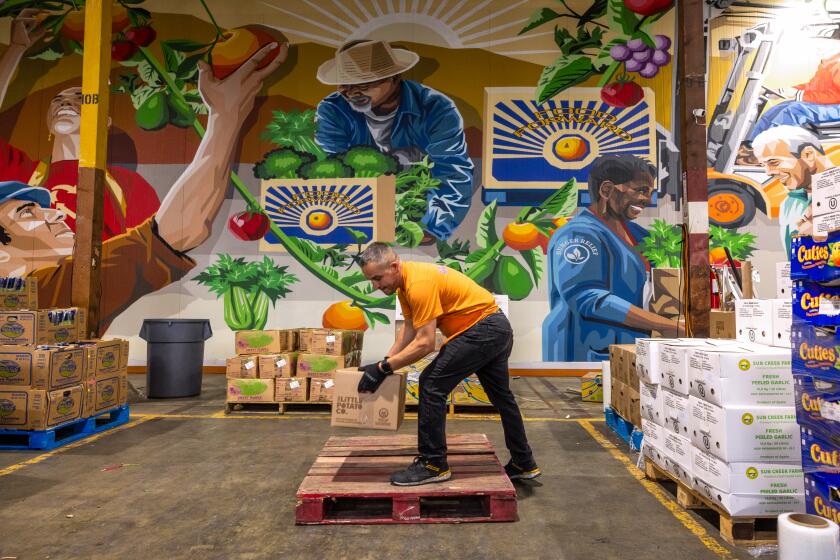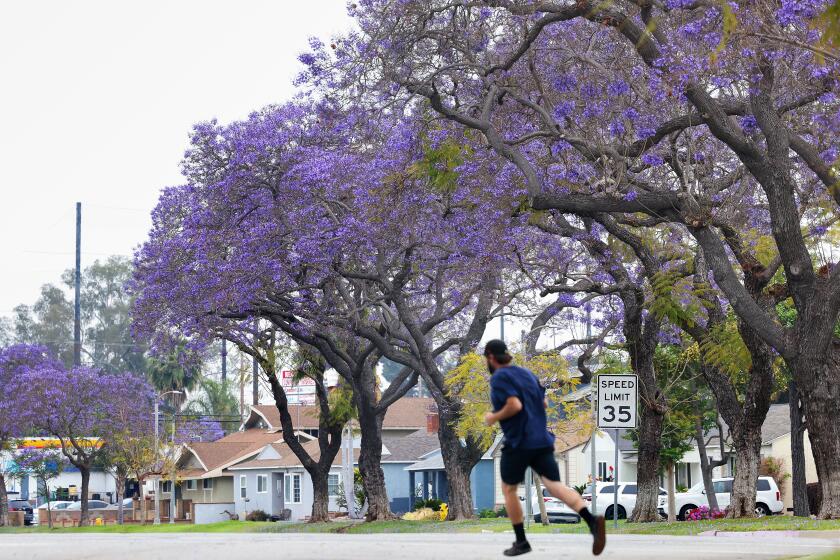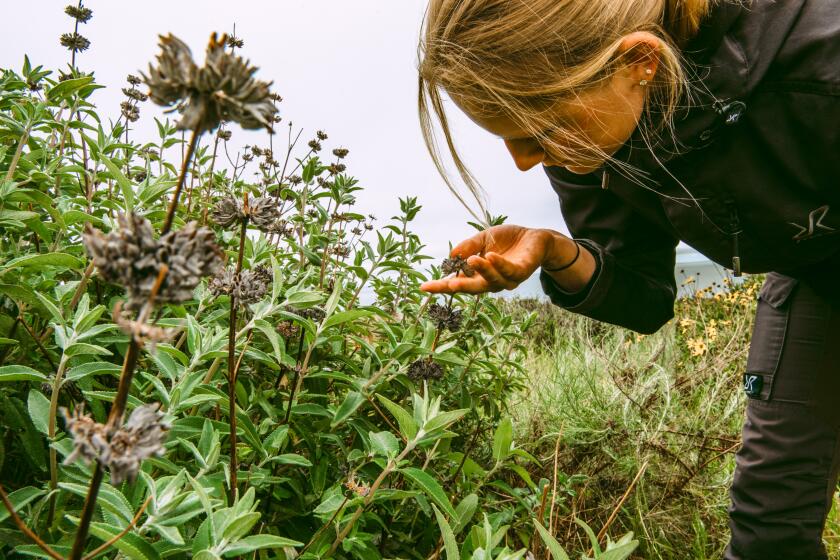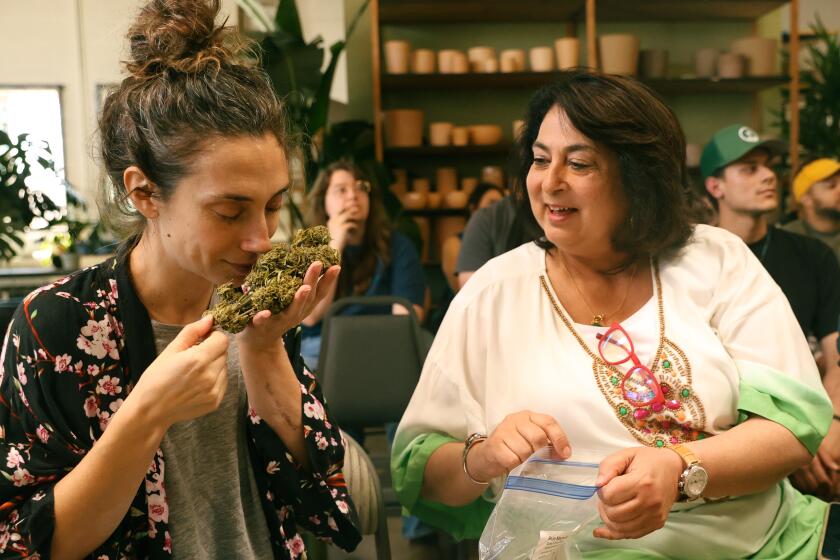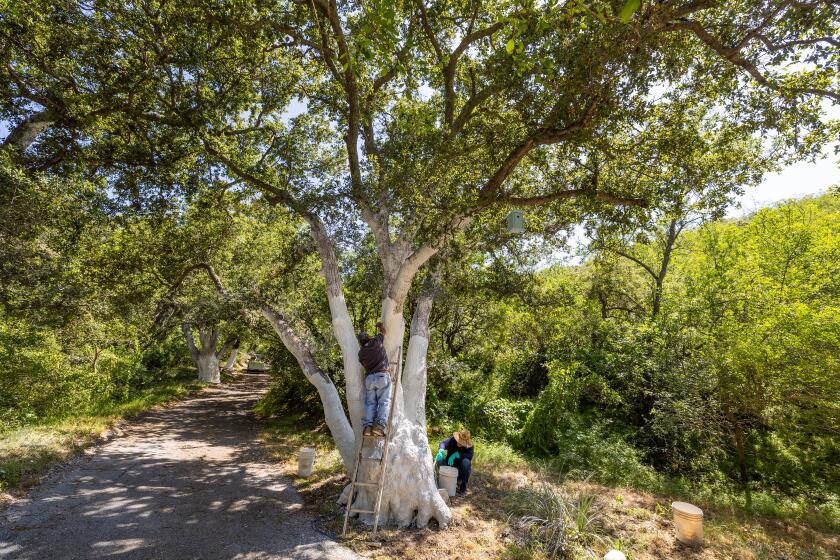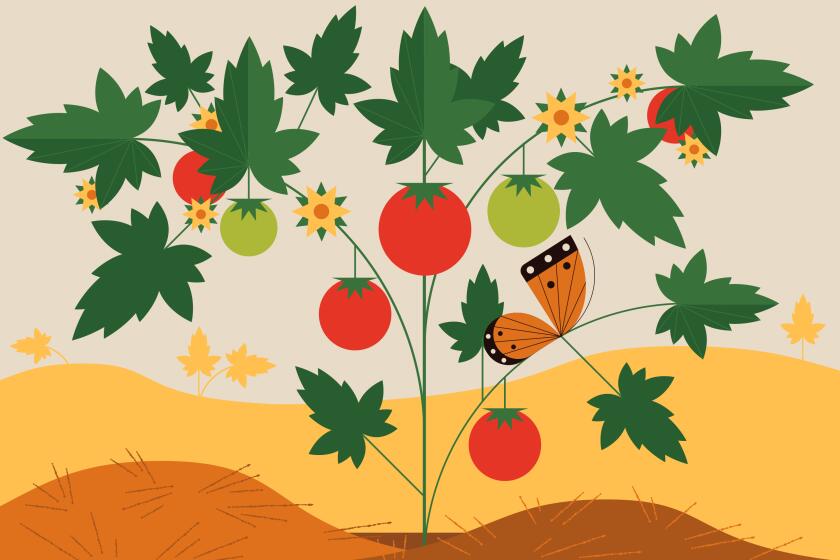Why do Los Angeles yards have so many fruit trees?
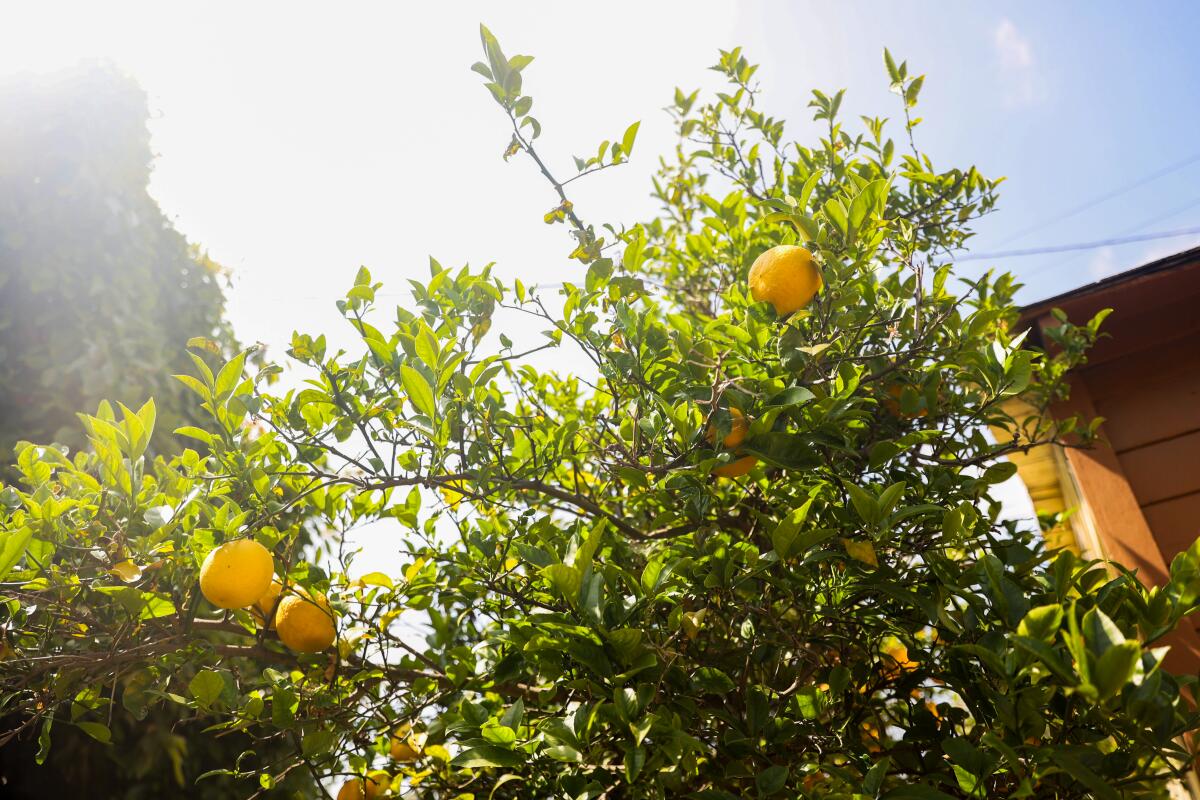
- Share via
Welcome to June, the official start of summer, no matter what SoCal’s chilly, gloomy skies have been telling us these past few weeks.
Below you’ll find plenty of plant-related activities for the sixth month, and information about the Los Angeles Zoo’s ongoing efforts to restore habitat in and out of its walls. But to start, I’d like to tackle a question we’ve been pondering since we did a survey asking “When is it OK to pick someone else’s fruit?”
We got lots of responses on this, and published the results this week (along with a list of gleaning organizations if you need help using up all your fruit). Now, we’re answering a related question: Why does Southern California have so many residential fruit trees anyway?
More than 800 readers shared their thoughts on the etiquette of picking fruit from a tree that’s not their own. But what’s legal and should one consider Nextdoor shaming?
Credit it partly to our (usually) sublime and storied climate, which allows us to grow just about anything, said Rachel Surls, the now-retired sustainable food systems advisor for UC Cooperative Extension in Los Angeles County and co-author of the fascinating book “From Cows to Concrete: The Rise and Fall of Farming in Los Angeles” (currently out of print but available at many libraries).
Southern California’s Indigenous peoples were more gatherers than farmers, but they did manage the native plants that fed them with controlled burns, careful pruning and scattering seeds to encourage future harvests. Early Spanish explorers immediately saw the potential for farming when they camped along the Los Angeles River in 1769. “After crossing the river we entered a large vineyard of wild grapes and an infinity of rose bushes in full bloom,” wrote Father Juan Crespí, a member of the expedition. “All the soil is black and loamy and is capable of producing every kind of grain and fruit.”
The region’s first cash crop was hemp, according to the book, valuable for creating sturdy ropes. In 1808, 70% of “Alta California’s” hemp was grown around “El Pueblo de la Reyna de Los Angeles,” the development’s first name.
But initially much of the region’s land went to grazing. Spanish soldiers were rewarded with vast land grants or ranchos, where they ran so many cattle that the pueblo became known as the “Queen of the Cow Counties.” The cattle also devastated the native habitat by overgrazing and eroding the plains around L.A., according to Surls’ book. Consequently many of the Indigenous people moved to the missions to survive, exchanging their labor for food but also making them more susceptible to deadly diseases due to crowded living conditions.
A Los Angeles couple tore out 1,150 square feet of thirsty lawn, replacing it with a showstopping mix of low-water California native plants.
Cattle were first sold for their hides, but during the Gold Rush, ranchers became rich providing meat to hungry miners. When Alta California became a U.S. territory after the Mexican-American War in 1848, settlers eager to farm the region’s abundant land fueled the California Land Act of 1851, which started the process of breaking up the ranchos. A two-year drought that began in 1862 helped finish them off when cattle died in droves and many ranchers sold large portions of their land to pay their debts. A few hung on by raising sheep, bees and wheat, which required little irrigation.
Meanwhile, the missions around L.A. had been cultivating citrus and grapes with such success that Los Angeles became California’s prominent wine region. William Wolfskill, one of L.A.’s leading grape growers, admired some orange trees in his neighbor’s yard and decided to grow his own, according to the book. His initial 2 acres did so well that he planted another 28 acres in the 1840s, “laying the foundation for what became a massive industry.”
Miners desperate to avoid scurvy (a disease caused by Vitamin C deficiency) were paying exorbitant prices for imported citrus, so many SoCal grape growers, already battling a mysterious disease that was killing their Mission grape vines, switched to citrus to help meet the demand.
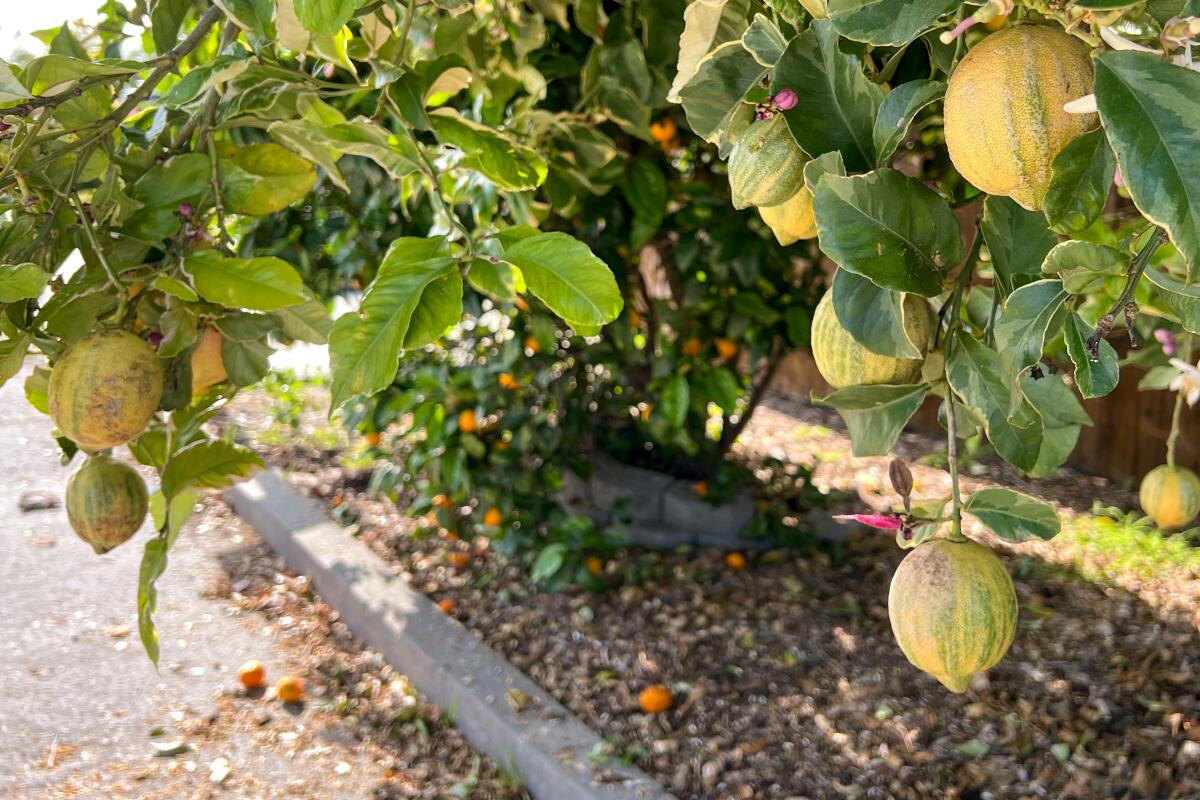
Food Forward saves nearly 2 million pounds of produce every week. It all started with a slow walk through a Los Angeles neighborhood full of unpicked fruit.
The biggest boost for farming, however, came when the railroad reached Southern California in 1876. The ability to quickly move perishable crops to San Francisco and beyond attracted a rush of wannabe farmers, according to the book. “Land owners quickly realized that subdividing their vast wheat fields into small farms and housing tracts would be the faster way to make money.”
That land boom went bust in the 1880s, winnowing out inexperienced farmers. But agriculture continued to prosper with irrigation projects, mechanization and diversification into vegetables, walnuts and myriad other crops, along with dairy and poultry operations.
Between 1909 and 1949, Los Angeles County had so many small farms that it was the most bountiful agricultural county in the United States, Surls said in a recent interview. After World War II ended, however, returning soldiers began flocking to the region to get jobs in the growing defense industry, and once again developers got busy, turning farms into housing.
You’re reading the L.A. Times Plants newsletter
Jeanette Marantos gives you a roundup of upcoming plant-related activities and events in Southern California, along with our latest plant stories.
You may occasionally receive promotional content from the Los Angeles Times.
“Many of those subdivisions were developed over old citrus orchards, but the fantasy remained that this was the place to grow beautiful oranges, lemons and grapes,” Surls said. “These new subdivisions were given names that were evocative of orchards and food production, and the developers would often put a [fruit] tree or two in the backyards.”
Plus, Surls said, “Angelenos love gardening, so they planted more fruit trees, and sometimes bit off more than they could chew [between pruning, harvesting and managing pests] or lost interest in or the ability to care for the fruit, which is why we see so many of these residential trees fall into neglect and all their fruit going to waste.”
And yet, Surls said, “Citrus is sort of primal to Southern California’s identity.” So even though it’s quarantined in certain areas to curb fruit fly infestations or the incurable huanglongbing (a.k.a. citrus greening disease), “people remember that beautiful smell of citrus groves from their younger years, and we can’t stop planting it.”
Last year, the jacarandas didn’t bloom until mid-June. This year, many are flowering from Long Beach to Santa Monica to Pasadena, a more typical timeline for the love-it-or-hate-it tree.
Edible gardening has seen a major resurgence in the United States, Surls said. “After the financial crisis of 2008, it really started booming with people wanting vegetable gardens or raising chickens and bees, and it further accelerated during COVID, according to statistics from the National Gardening Assn.”
I must plead guilty on that front, since I’ve added 10 fruit trees — citrus, peaches, nectarines, pomegranate and persimmon — to my yard since 2020. And now that I’ve finally learned that you don’t prune fruit trees like you prune roses, I may actually get a good crop next summer, but that’s a story for another day.
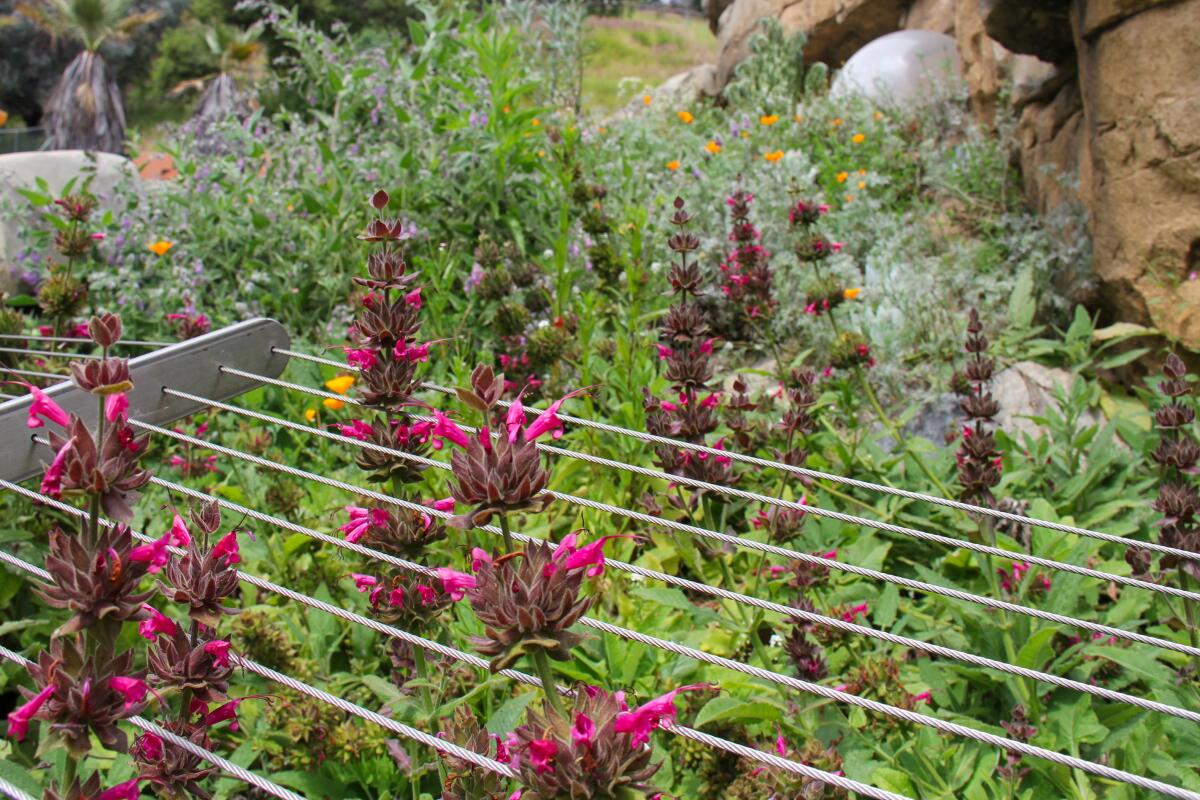
Restoring habitat at L.A. Zoo
Over the past 18 months, the Los Angeles Zoo has converted an old prairie dog enclosure into a fragrant, blooming “Under/Over Garden” of California native plants to support local birds and insect pollinators — the brainchild of Park Maintenance Supervisor Robert Gonzales. North Hollywood High School Zoo Magnet Center students helped put together the garden at the north entrance. The zoo also recently removed 14,000 square feet of lawn to create a California Native Gateway Garden at its south entrance, by the bus circle, drawing on the expertise of the Theodore Payne Foundation for its native plant choices.
One of the easiest ways to learn about California native plants is volunteering to get your hands dirty. Here are some opportunities around Los Angeles, Orange and Santa Barbara counties.
Jake Owens, the zoo’s director of conservation, has been busy since he started there in 2019, guiding a conservation strategic plan that involves projects both in and outside the zoo grounds. In 2022, zoo conservation staff and volunteers began habitat restoration work at the Fern Dell West Trail in Griffith Park, spending the first Saturday of every month, October through June, clearing invasive weeds such as mustard, castor bean, fennel and cocklebur to allow native plants to return and thrive.
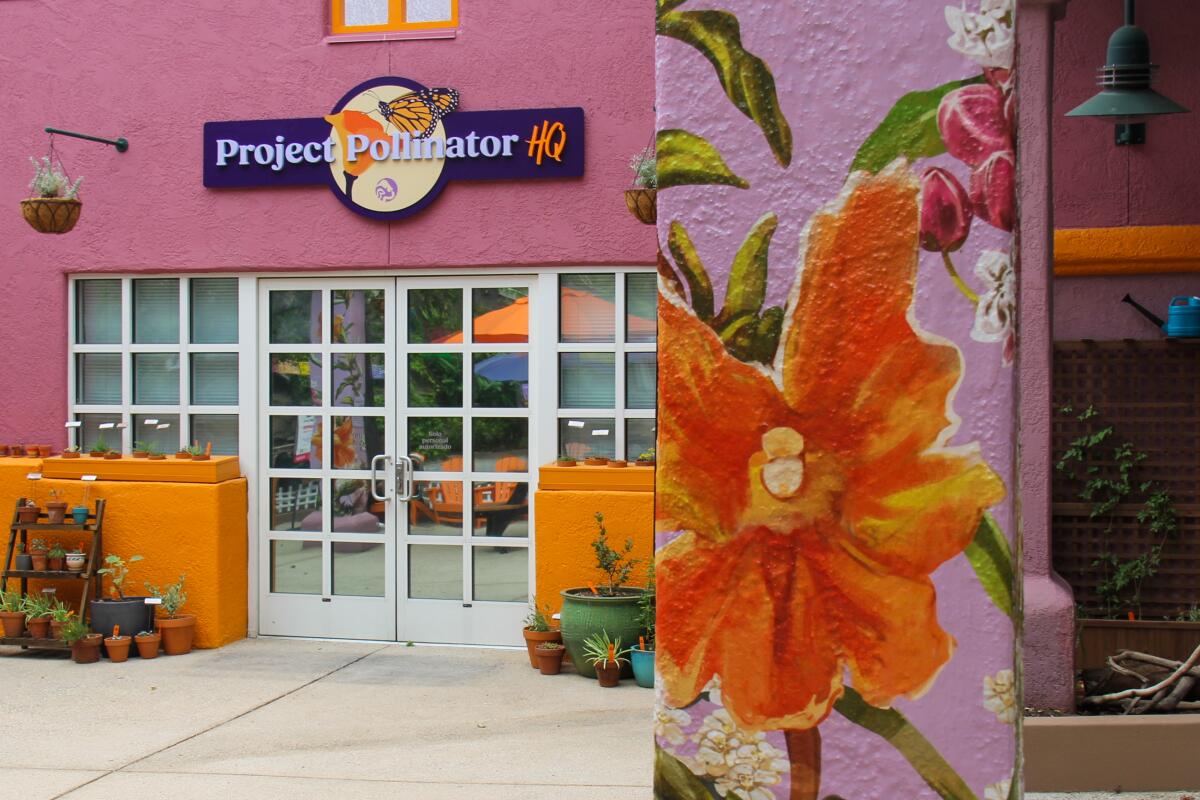
This year, the zoo created a colorful Project Pollinator space in the area near the Under/Over Garden for classes, demonstrations and even giveaways of “zoo doo,” the special animal-poop-fueled compost. The zoo is much more than animal exhibits, Owens said. Its conservation efforts restore habitats and build awareness about and sympathy for endangered animals such as condors in California, southern mountain yellow legged frogs in the San Gabriel Mountains and bearded vultures in South Africa.
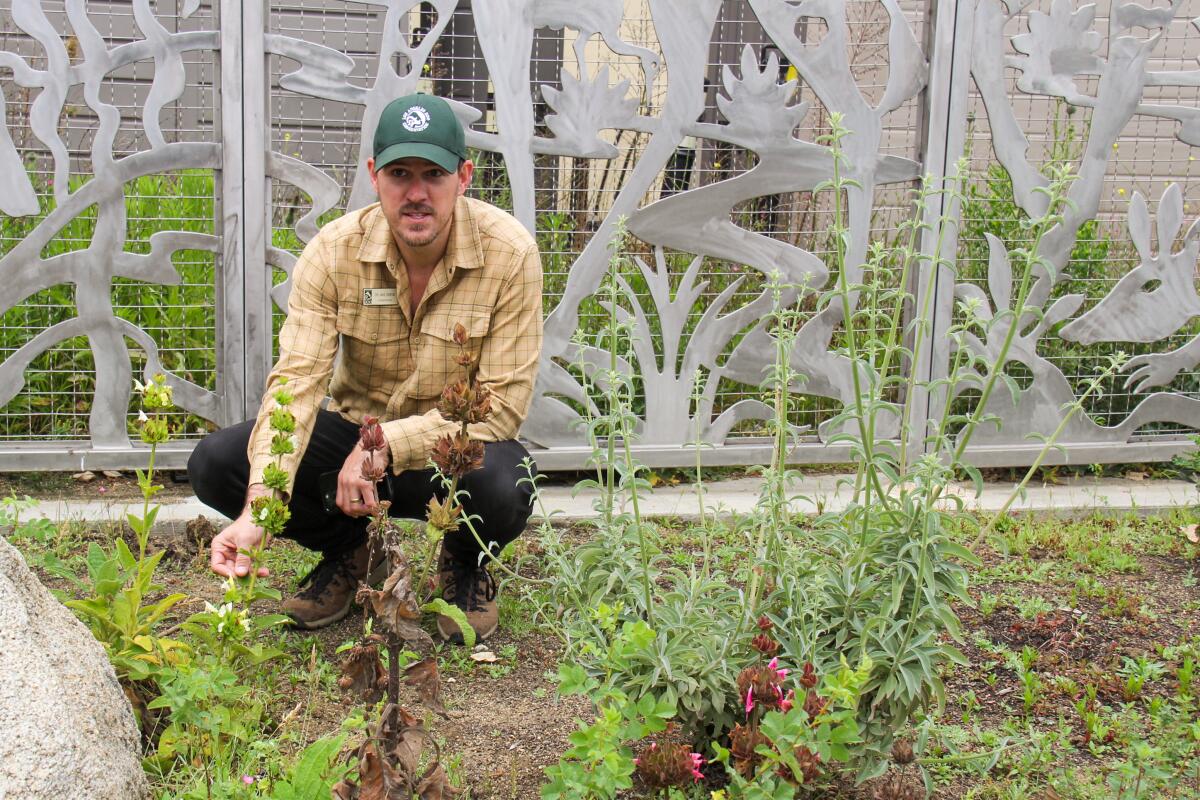
That said, keeping weeds out of habitat gardens requires many hands. You can help as a volunteer by emailing [email protected], and starting in October, you can help Owens and others continue habitat restoration at Griffith Park; just register online.
Upcoming events
June 1-2
A Weekend of Bonsai & Fuchsia, 10:30 a.m. to 2:30 p.m. at Sherman Library & Gardens in Corona del Mar, in collaboration with the Orange County Fuchsia Society and Coastal Bonsai Club. The weekend includes demonstrations, talks, tours of the garden’s fuchsia and bonsai displays and plant sales. The show is free with $5 admission to the gardens (members and children 3 and under enter free). thesherman.org
June 2
Plant Identification Hike with artist and herbalist Paige Emery, 10:30 a.m. to 12:30 p.m. in Altadena. Tickets are $30. usalproject.com
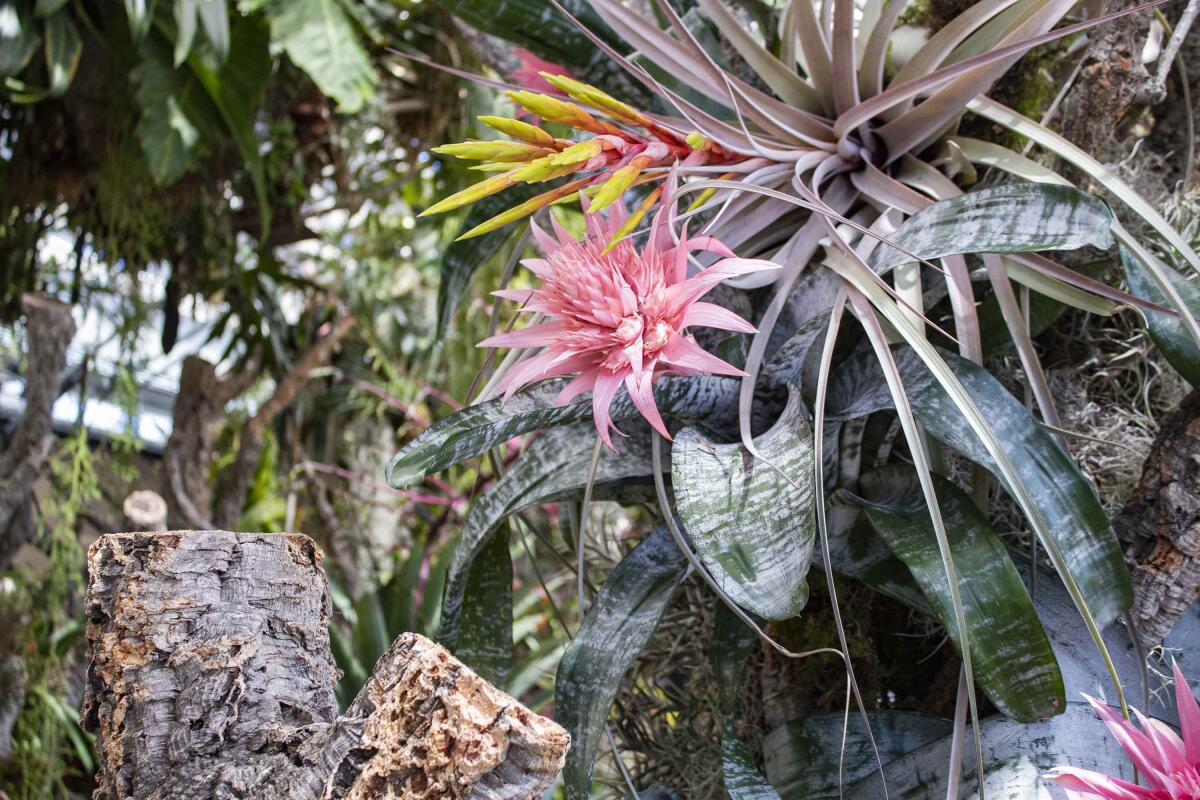
Bromeliads in Hawaii: The 2014 World Bromeliad Conference is a program by geographer and bromeliad collector Cristy Brenner during the South Bay Bromeliad Assn. monthly meeting, 1:30 p.m. in the Palos Verdes Library Community Room in Rolling Hills Estates. Admission is free. bsi.org
Southern California is one of the best places on the planet to grow cannabis. Here’s what you need to know before planting it in your backyard.
June 3
Centennial Farm Discovery Day, 9 a.m. to noon at the Orange County Fair & Event Center’s Centennial Farm. Child-friendly activities include self-guided tours, a look at livestock animals, radish seed planting, oxen demonstration and information about chicks. Admission and parking are free; reservations required for groups larger than 10. ocfair.com
June 3 and 10
Music in the Rose Garden, 1-3 p.m. at the Huntington Library, Art Museum and Botanic Gardens in San Marino featuring Pasadena Conservatory of Music faculty member Brian Barany performing on guitar. The performances are included with $25 admission to the garden ($21 for seniors 65+ and students and military with ID, $13 for ages 4-11 and free for members and children under 4). huntington.org
For the record:
11:28 a.m. June 4, 2024An earlier version of this article incorrectly identified Brian Barany as a student at the Pasadena Conservatory of Music. He is a member of the faculty.
June 7-9
Plant Expo and Sale I of cactus and succulents at Descanso Gardens, with plants on display from the Los Angeles Cactus and Succulent Society, 10 a.m. to 4 p.m. each day in the Boddy House, and plants for purchase from 9 a.m. to 6:30 p.m. The expo and sale is free with $15 admission to the gardens ($11 for seniors 65+ and students with ID, $5 for children ages 5-12, free for members and children 4 and under.). descansogardens.org
June 8
Natural Paint Making Workshop with artist Júlia Godoy, 1 to 4 p.m. at her studio in downtown L.A. Learn to make pigments and paints from bones, ash, plants, soil and insects. All materials will be provided and participants will be provided with a one-of-a-kind paint palette. Tickets are $165. usalproject.com
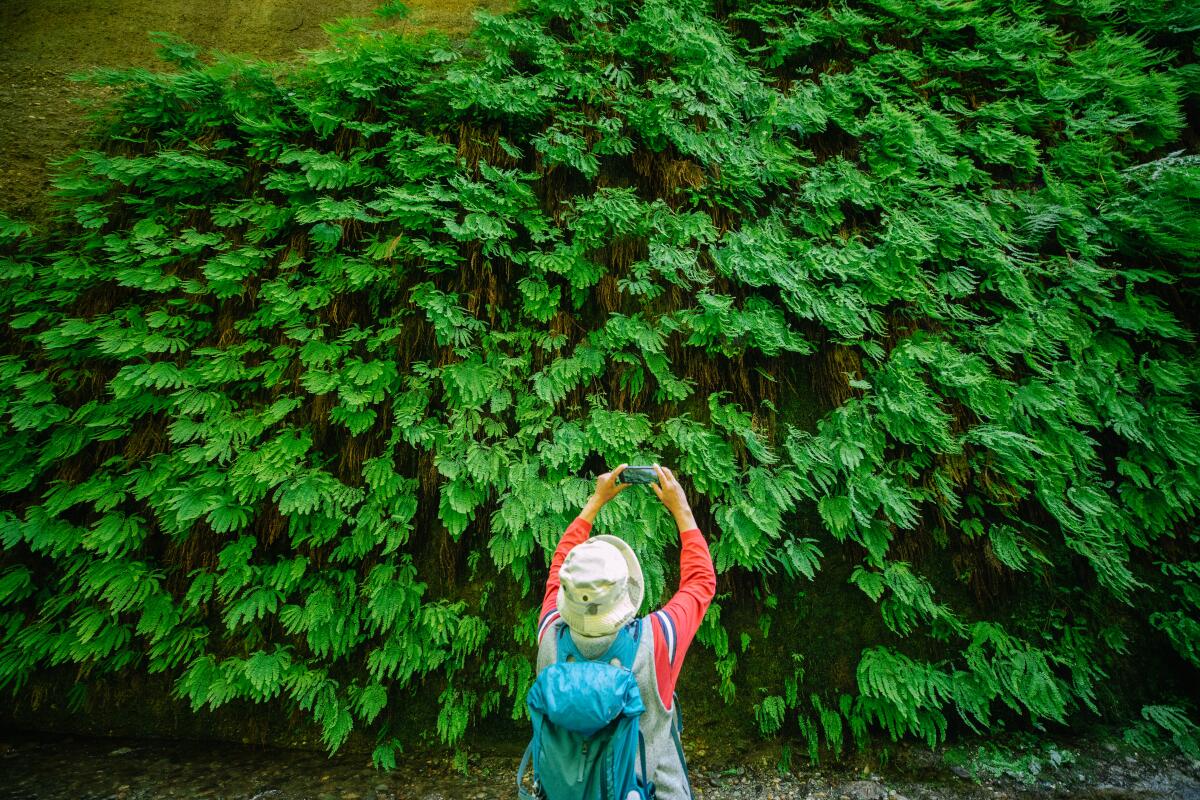
June 8-9
Los Angeles International Fern Society Fern and Exotic Plant Show & Sale, 9 a.m. to 4:30 p.m. at the Los Angeles County Arboretum in Arcadia, with free workshops and lectures at 11 a.m., 1 p.m. and 3 p.m. on June 8 and 11 a.m. and 1 p.m. on June 9. Vendors will be selling orchids, carnivorous plants, bromeliads, cacti, cycads, palms, epiphyllum, tillandsia, terrarium plants, begonias and tree ferns. The show is included with $15 admission to the arboretum ($11 students with ID and seniors 62 and older, $5 children ages 5-12, free to members and children 4 and under.) laifs.org
Inspired by the slow flower movement, landscape designer Kathleen Ferguson is “making people happy” by growing environmentally appropriate flowers at her micro-farm in L.A.
June 9
“Dudleyas” is the book and talk presented by co-author Jeff Moore during the monthly South Coast Cactus & Succulent Society meeting at 1 p.m. at the South Coast Botanic Garden in Rolling Hills Estates. Admission is free to members and their guests or people who want to learn more about the organization. Annual membership is $20. southcoastcss.org
June 13
Behind the Scenes at Theodore Payne Foundation with Assistant Director Katie Tilford, 9 to 10:30 a.m. at the foundation in Sun Valley. This event takes visitors to parts of the nursery not usually open to the public, including the plant propagation and seed conservation facilities. Participants should wear closed-toe shoes and long pants, and be prepared for 90 minutes of walking on sometimes steep, uneven or wet surfaces. Reserved tickets are $10 (free to members). eventbrite.com
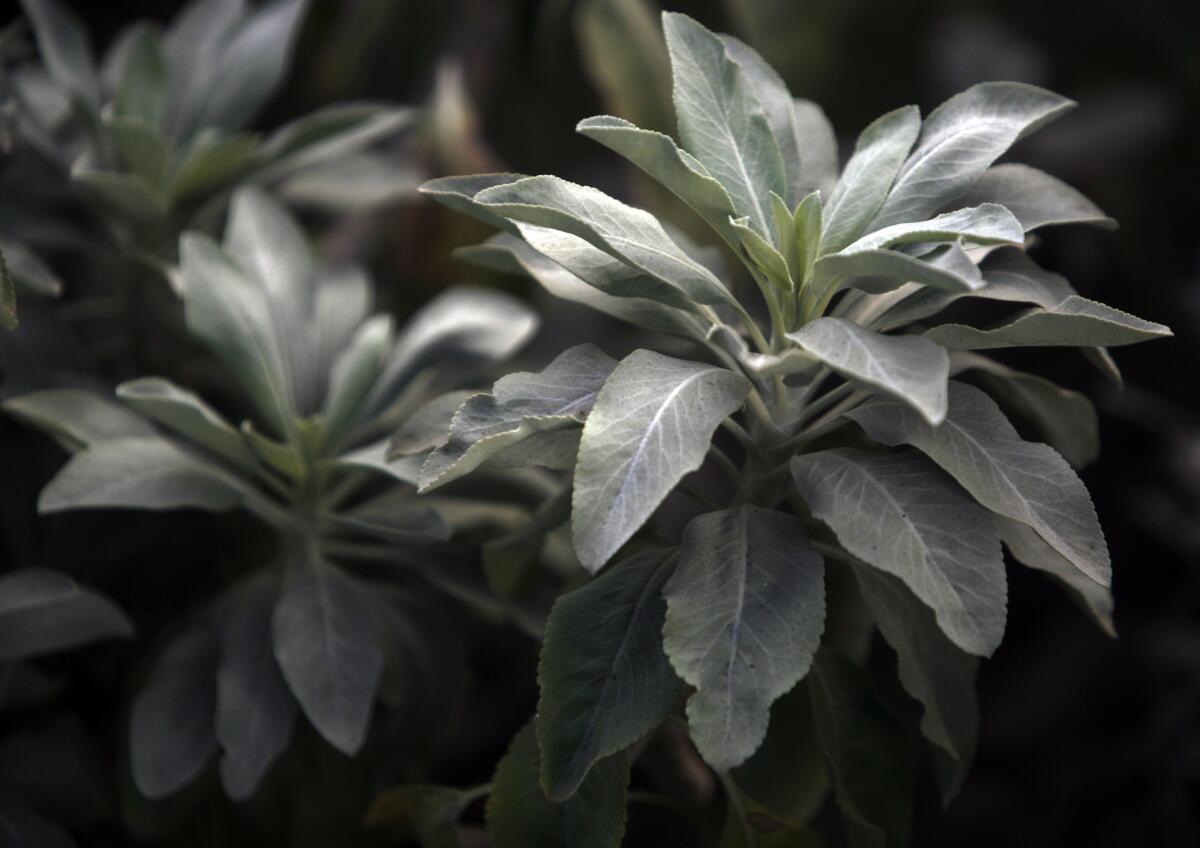
June 14
Propagating California Native Plants From Cuttings with Theodore Payne Foundation Horticulture Director Tim Becker, 9 a.m. to noon at the foundation nursery in Sun Valley. All materials are provided and participants will leave with a flat of 50 starts for their own garden. Reserved tickets are $85 ($75 for members). eventbrite.com
An insider’s travel guide that takes you beyond the mouse ears, selfie spots and Golden Gate Bridge.
T
June 14-16
Plant Expo and Sale II of bromeliads at Descanso Gardens, with plants on display and for purchase from the San Fernando Valley Bromeliad Society. The expo is 10 a.m. to 4 p.m. each day in the Boddy House, with plants for purchase from 9 a.m. to 6:30 p.m. The expo and sale are free with $15 admission to the gardens ($11 for seniors 65+ and students with ID, $5 for children ages 5-12, free for members and children 4 and under.). descansogardens.org
June 15
Microforests 101, a workshop about the creation and benefits of microforests inspired by the Miyawaki method from Japan, hosted by the urban forestry nonprofit North East Trees and taught by horticulturist Katherine Pakradouni from 9 a.m. to noon at the Ascot Hills Park microforest in El Sereno. Tickets are $25. usalproject.com
Floral Design Workshop with multimedia artist Nelson ZêPequéno, 5 to 7 p.m. at his private studio in downtown L.A. Learn how to select florals and foliage for color shape and size. Bring your own “reasonably sized vessel” to serve as a vase; all other materials provided. Tickets are $100. usalproject.com
Harvesting Cannabis in the Garden, 10 a.m. at Fig Earth Supply in Mount Washington, a workshop taught by Emily Gogol of Grow It From Home in Oregon. Tickets are $10; cannabis seeds will be available for purchase. figearthsupply.com
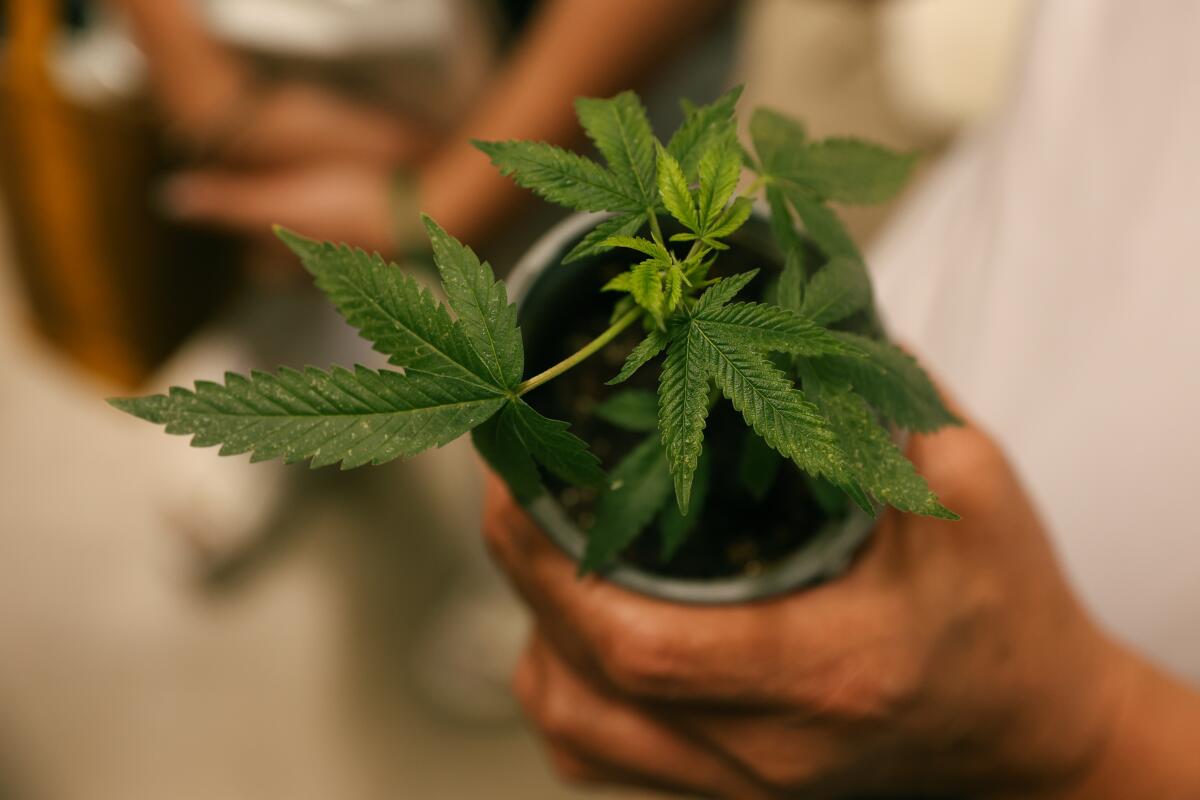
Growing Cannabis in the Garden, a free workshop taught by Emily Gogol of Grow It From Home in Oregon, 5 to 6 p.m. at Latinx With Plants in Boyle Heights. Cannabis seeds will be available for purchase. eventhi.io
June 15-16
Southern California Carnivorous Plant Enthusiasts Carnivorous Plant Show & Sale, 10:30 a.m. to 4 p.m. both days at Sherman Library & Gardens in Corona del Mar, includes talks at 11:30 a.m. introducing carnivorous plants on June 15 and the basics of carnivorous plant care on June 16, along with guided tours at 1 p.m. each day of the garden’s carnivorous plant collection led by Horticulture Director Kyle Cheesborough. The show and talks are included with $5 admission to the gardens (members and children 3 and under enter free). sccpe.org
June 15, 29, July 13, 20 and Aug. 3
Landscape Alchemy: Designing Whole-System Gardens, a five-part course taught by landscape designers Shawn Maestretti and Leigh Adams of Studio Petrichor, starting with a 90-minute Zoom introduction on June 15 and then classroom instruction in Pasadena and Altadena from 8:30 a.m. to 1 p.m. each day. Tickets are $295. eventbrite.com
The goldspotted oak borer is just 14 miles from the Santa Monica Mountains’ 600,000 oak trees and threatens to devastate forests throughout California, harming wildlife and increasing fire risks.
June 16
Herb Walk: Medicinal Plants of California, an interactive garden walk and talk with herbalist William Broen focusing on medicinal and edible plants native to California, 9 to 11 a.m. at the California Botanic Garden in Claremont. Advance registration required; tickets are $30 ($25 members). calbg.org
June 21
Comprehensive Irrigation for California Native Plants with Theodore Payne Foundation Horticulture Director Tim Becker, 9 a.m. to noon at the foundation nursery in Sun Valley. Learn how, when and why to irrigate California native plants using various types of systems and techniques. Reserved tickets are $65 ($55 for members). eventbrite.com
June 22-23
The 71st Culver City Garden Club Show & Sale at the Culver City Veterans Memorial Building, 11 a.m. to 4 p.m. on June 22 and 10 a.m. to 4 p.m. on June 23, includes a judged exhibition of plants, flowers, edibles and crafts along with two gardening workshops each day and a sale of plants and gardening items. show.culvercitygardenclub.org
The 5 Dimensions of Design: An Intuitive & Somatic Experience to Becoming a Garden with landscape designers Shawn Maestretti and Leigh Adams of Studio Petrichor, 8:30 a.m. to 12:30 p.m. in Leimert Park. The class is for do-it-yourselfers who want to reimagine their outdoor spaces with water harvesting, soil building and creating habitats, and participants will help design a garden space. Tickets are $195. eventbrite.com
Gardening Practices & Techniques with community organizer, farmer and educator Francis River, 10:30 a.m. to 12:30 p.m. at Avenue 33 Farm in Lincoln Heights. Learn the basics of starting and maintaining an organic regenerative garden. Tickets are $30. usalproject.com
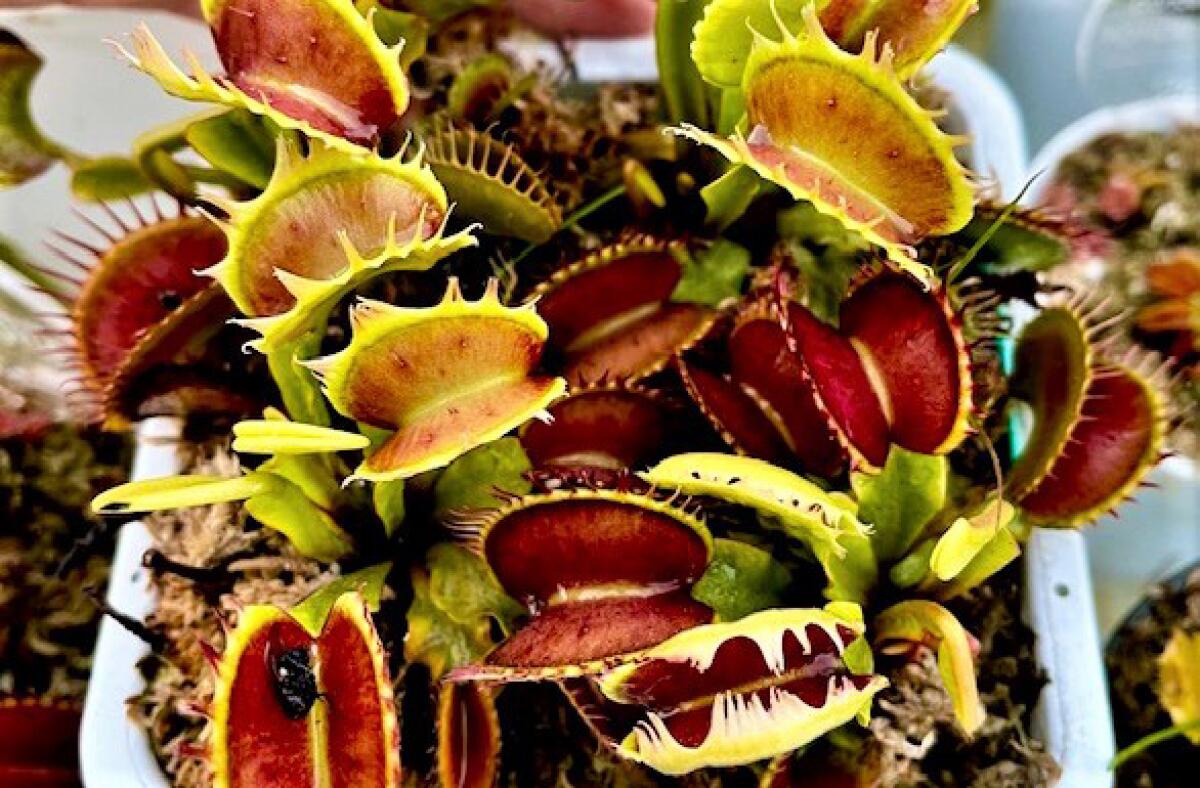
Carnivorous Tank Workshop to educate participants about carnivorous plants, taught by JiaHao Peng, a visual artist who specializes in horticulture and rare exotic plants, 6 to 8 p.m. at the Ten Ten Photosynthesis nursery in downtown L.A. Participants will go home with a “Jungle in a Jar” creation. All materials provided. Tickets are $350. usalproject.com
Heavy winter rains have wakened the fungal spores in our soil. Tomatomania owner Scott Daigre explains how to keep tomatoes fungus free, plus Southern California plant events.
June 23
Farm Access L.A. Passport to Stone Fruit, 8 a.m. to 1 p.m. at the Hollywood Farmers Market, is a fundraiser to support the market. For $40, participants can receive a “passport” to enjoy bites of a variety of stone fruit from participating vendors, as well as a commemorative tote bag for $60 and a bag and reusable cup for $80. foodaccessla.org
June 28
Propagating California Native Plants From Seed with Theodore Payne Foundation Seed Program Manager Genevieve Arnold, 9 a.m. to noon at the foundation nursery in Sun Valley. All materials are provided and participants will take home the seeds they’ve sown. Reserved tickets are $85 ($75 for members). eventbrite.com
June 29
Plant Dye Workshop taught by herbalist and artist Maria Fernanda of Blue Hour Traveling ApoTEAcary, 2 to 4 p.m. at the Silver Lake Recreation Center. Learn about natural dying, fabric prep and mordants (the chemicals that help dyes adhere to fabrics), and dye a Habotai silk scarf or mulberry silk pillowcase with all natural dye materials. Tickets are $111. usalproject.com
Pride at the Garden: Queering California Botanic Garden’s Collections features a tour of the garden’s botanical collections with stops highlighting queer plant stories and botany lessons “from queer and decolonial perspectives,” 10 to 11:30 a.m. at the gardens in Claremont. Tickets are $15 ($10 members). calbg.org
Consider subscribing to the Los Angeles Times
Your support helps us deliver the news that matters most. Become a subscriber.
What we’re reading
A wild male orangutan in Indonesia apparently used a potent medicinal plant to successfully treat an open wound on his face and humans are going berserk over the news. I had to go to an abstract of the original article in Scientific Reports, however, to learn the name of the plant that reportedly is used by humans throughout Southeast Asia to treat pain and inflammation — Akar Kuning (Fibraurea tinctoria). Now my question is, who learned from whom to use the leaves of this plant for medicinal purposes?
Food Forward started as a group of volunteers bonding over picking unwanted residential fruit in the San Fernando Valley. Fifteen years later, it’s rescuing and redistributing nearly 2 million pounds of fruits and vegetables every week to some 250 hunger relief organizations for free.
We asked readers what they thought about picking seemingly unwanted residential fruit from other people’s trees, and boy, did we get an earful. We got responses from 855 readers who had strong feelings on both sides, and we also created a list of gleaning organizations if you need help getting rid of your residential fruit.
I took a deep dive into human composting after I learned that people in Southern California are flying and even driving the bodies of their loved ones to Washington state, where the eco-friendly burial process was first legalized in 2019. It won’t be legal in California until 2027. I was deeply moved by the stories I heard, and the beautiful photos captured by The Times’ Pulitzer Prize-winning photographer Christina House.
Love them or hate them, jacaranda trees are in bloom in the Southland. They’re flowering three weeks earlier than last year and blooms have been spotted from Pasadena to East Hollywood to Long Beach. We spoke to tree experts about why some are bursting right now and others may seem late to the purple party.
And finally, I was riveted by this story about the death march of the goldspotted oak borer, a charming name for a nasty little beetle threatening to destroy Southern California’s beloved oak trees. Worried you might have one in your oak tree? Look for the tiny D-shaped exit holes in the tree trunks.
Sign up for The Wild
We’ll help you find the best places to hike, bike and run, as well as the perfect silent spots for meditation and yoga.
You may occasionally receive promotional content from the Los Angeles Times.
